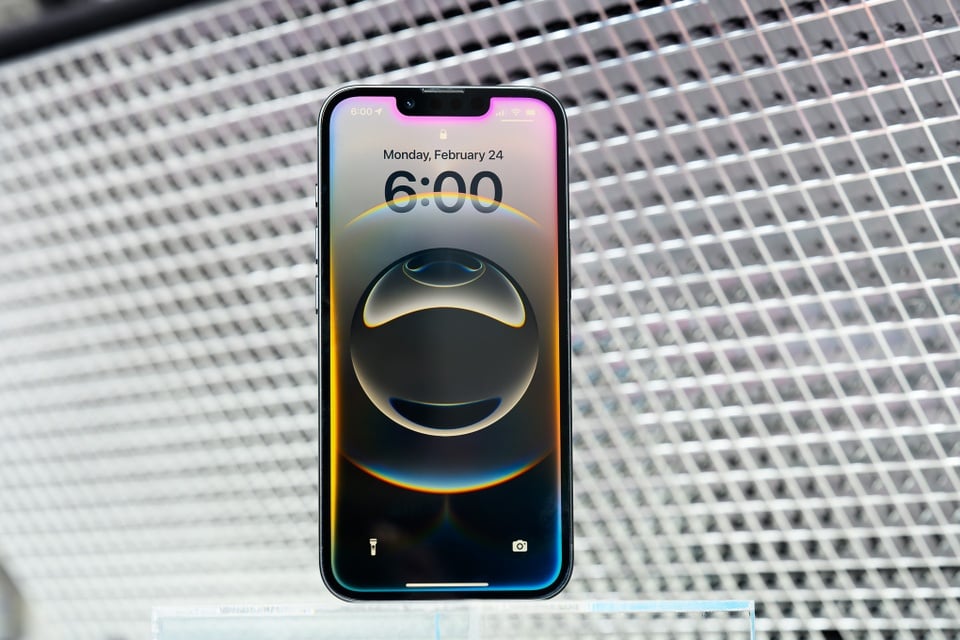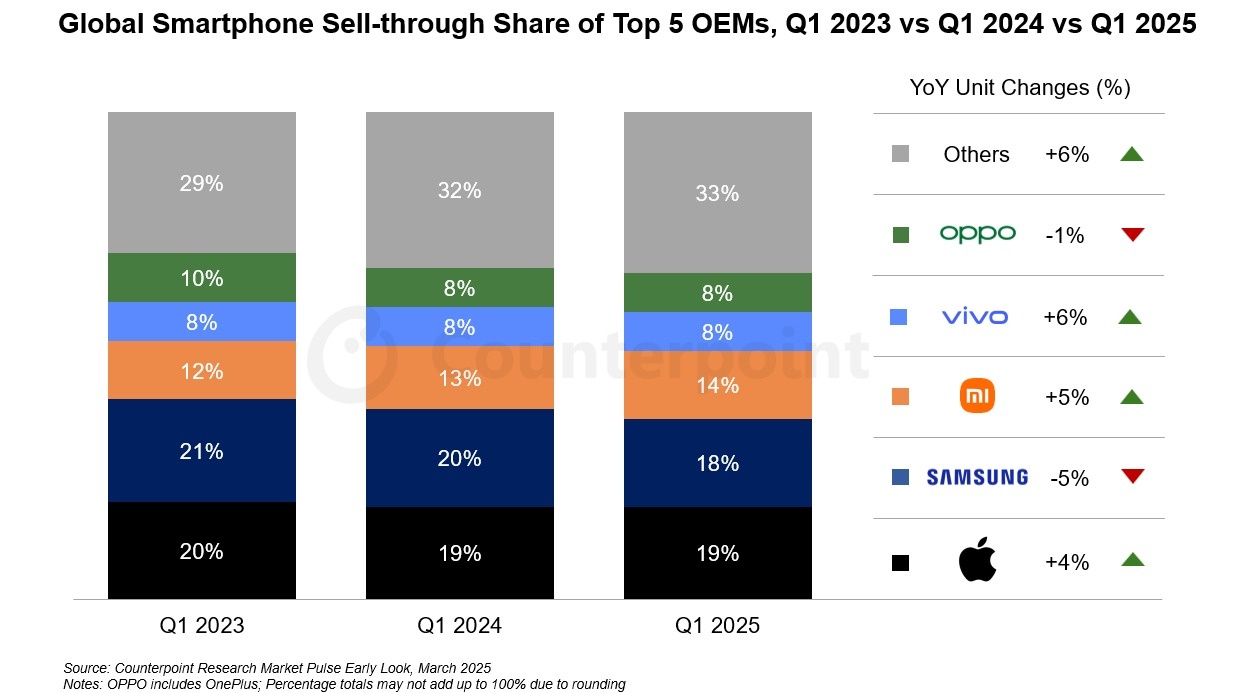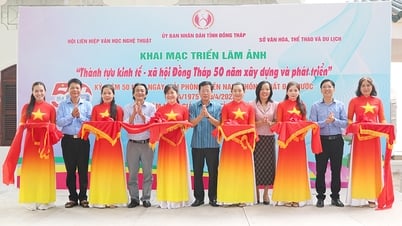 |
iPhone 16e. Photo: The Verge . |
According to data from Counterpoint Research , Apple was the leader in the global smartphone market in the first quarter. The reason came from strong demand in some countries, sales were boosted by the iPhone 16e.
In the first quarter, Apple's global market share reached 19%, with sales increasing 4% compared to the same period last year. Meanwhile, Samsung ranked second with a market share of 18%.
Data shows double-digit iPhone growth in Japan, India, the Middle East, Africa and Southeast Asia. This is in contrast to China, where Apple is struggling due to competition from domestic rivals.
The launch of the iPhone 16e also gives Apple an advantage. By launching the iPhone in the first quarter, Apple is directly competing with Samsung and Xiaomi, which often launch Android flagships at the beginning of the year.
Samsung had a slow start with the Galaxy S25 being launched later than usual. However, the company's sales in March increased by double digits thanks to the S25 and some A-series models. The Galaxy S25 Ultra in particular saw its market share increase.
Ranked third with a market share of 14%, Xiaomi saw significant sales growth in China, where the company is expanding its brand into the premium segment. The next positions in the top 5 belong to Vivo and Oppo, respectively.
According to Counterpoint Research , the global smartphone market grew 3% year-on-year in the first quarter. Meanwhile, IDC calculated that production increased by about 1.5%, with Apple increasing shipments to avoid tariffs.
US President Donald Trump’s tariff and reciprocal tariffs, along with escalating trade tensions, have roiled financial markets, worsened the economic outlook and raised the possibility of inflation. Apple has reportedly chartered flights to carry 600 tonnes of iPhones, equivalent to 1.5 million units, from India to the US to avoid tariffs.
The Trump administration decided late last week to exempt smartphones, computers, and some home appliances from tariffs, sending tech stocks higher on April 14, with Apple alone posting a 3.5% gain.
“The US government’s tariff exemption for smartphones imported from China is a temporary solution for US companies, but they still have to rely on their supply chains in China amid the fluctuating tariffs,” said Ryan Reith, vice president of Worldwide Device Trackers at IDC .
According to Reith, US smartphone companies should focus the tax-free period on building and shipping as many products as possible.
 |
Market share of leading smartphone brands in Q1/2025. Photo: Counterpoint Research . |
Commenting on the market in general, analyst Ankit Malhotra from Counterpoint Research said that smartphone sales in January grew strongly, especially in China with the government's subsidy program.
According to analysts, smartphone sales may stabilize because this is an essential product. However, economic instability may make users hesitate and postpone purchases, negatively affecting the market.
“Market momentum continues to be driven by the Galaxy S25 and iPhone 16e, but quickly shifts as economic uncertainty and trade war risks increase, particularly towards the end of the quarter. We continue to analyze policy changes, forecasting a decline in the smartphone market in 2025 despite Q1 growth,” Reith concluded.
Source: https://znews.vn/apple-nhan-tin-tich-cuc-post1545898.html


![[Photo] Cultural, sports and media bloc at the 50th Anniversary of Southern Liberation and National Reunification Day](https://vphoto.vietnam.vn/thumb/1200x675/vietnam/resource/IMAGE/2025/4/30/8a22f876e8d24890be2ae3d88c9b201c)

![[Photo] The parade took to the streets, walking among the arms of tens of thousands of people.](https://vphoto.vietnam.vn/thumb/1200x675/vietnam/resource/IMAGE/2025/4/30/180ec64521094c87bdb5a983ff1a30a4)
![[Photo] Chinese, Lao, and Cambodian troops participate in the parade to celebrate the 50th anniversary of the Liberation of the South and National Reunification Day](https://vphoto.vietnam.vn/thumb/1200x675/vietnam/resource/IMAGE/2025/4/30/30d2204b414549cfb5dc784544a72dee)


















![[Photo] Performance of the Air Force Squadron at the 50th Anniversary of the Liberation of the South and National Reunification Day](https://vphoto.vietnam.vn/thumb/1200x675/vietnam/resource/IMAGE/2025/4/30/cb781ed625fc4774bb82982d31bead1e)




































































Comment (0)